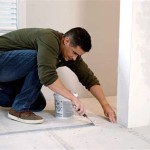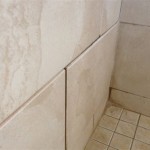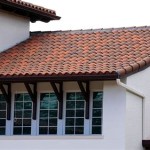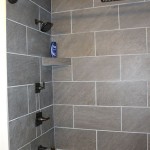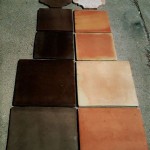How to Tile a Fireplace Like a Pro: Weighing the Advantages and Disadvantages
Tiling a fireplace is a transformative home improvement project that can dramatically enhance a room's aesthetics and increase property value. This undertaking, however, requires careful planning, precise execution, and a thorough understanding of the associated advantages and disadvantages. By evaluating these factors, homeowners can make informed decisions and achieve professional-looking results.
This article provides a comprehensive guide to tiling a fireplace, detailing the necessary steps, materials, and considerations. It also presents a balanced overview of the pros and cons of tackling this project, enabling readers to determine if it aligns with their skills, budget, and desired outcome.
Preparing the Fireplace Surface
The foundation of a successful tiling project lies in meticulous preparation. A clean, level, and structurally sound surface is essential for proper adhesion and long-term durability of the tile installation. Failure to adequately prepare the surface can result in tile cracking, detachment, and costly repairs.
The initial step involves thoroughly cleaning the existing fireplace surround. Remove any loose debris, dust, soot, or grease using a stiff brush, vacuum cleaner, and appropriate cleaning solutions. For stubborn stains, consider using a specialized fireplace cleaner or a diluted solution of trisodium phosphate (TSP), taking care to follow the manufacturer's instructions and safety precautions.
Next, inspect the existing surface for any cracks, holes, or unevenness. Repair any imperfections using a concrete patching compound or mortar, ensuring it is compatible with the existing material. Allow the patching compound to dry completely according to the manufacturer's recommendations before proceeding. For larger cracks or structural damage, it may be necessary to consult a professional contractor.
If the existing surface is painted or coated with a sealant, it is crucial to roughen it to promote adhesion. This can be achieved using a coarse-grit sandpaper or a diamond grinding pad. The goal is to create a textured surface that provides a mechanical bond for the tile adhesive. After sanding, thoroughly remove any dust or debris to ensure a clean surface.
In some cases, it may be necessary to install a cement backer board over the existing surface, particularly if it is uneven, damaged, or constructed of a material that is not suitable for tiling. Cement backer board provides a stable, moisture-resistant substrate that is ideal for tile installations. Cut the backer board to size using a utility knife or circular saw, ensuring a proper fit around the fireplace opening. Attach the backer board to the existing surface using thin-set mortar and screws, following the manufacturer's instructions.
Prior to tiling, apply a primer to the prepared surface. Primer enhances adhesion and helps to prevent moisture from penetrating the substrate. Choose a primer that is compatible with the tile adhesive and the surface material. Apply the primer according to the manufacturer's instructions, allowing it to dry completely before proceeding with the tiling process.
Selecting Tiles and Materials
The selection of appropriate tiles and materials is paramount to achieving the desired aesthetic and ensuring the longevity of the fireplace surround. Factors to consider include the style of the room, the heat resistance of the tiles, the durability of the grout, and the overall budget.
Tiles are available in a wide range of materials, including ceramic, porcelain, stone, and glass. Ceramic tiles are a popular choice due to their affordability, versatility, and ease of installation. Porcelain tiles are denser and more durable than ceramic tiles, making them suitable for high-traffic areas and resisting stains. Stone tiles, such as marble, granite, and slate, offer a natural and elegant look, but they can be more expensive and require specialized maintenance. Glass tiles can add a touch of modern sophistication, but they may be more susceptible to scratches and chips.
When selecting tiles for a fireplace surround, it is essential to choose tiles that are rated for heat resistance. Ensure the chosen tiles can withstand the temperatures generated by the fireplace without cracking or discoloration. Consult with a tile supplier or manufacturer to determine the appropriate tile material for your specific fireplace type.
The adhesive used to bond the tiles to the substrate is also critical. Thin-set mortar is a common choice for tile installations, offering excellent adhesion and durability. Select a thin-set mortar that is specifically formulated for use with the chosen tile material and substrate. Consider using a modified thin-set mortar for improved flexibility and crack resistance.
Grout fills the gaps between the tiles, providing a watertight seal and enhancing the overall aesthetic. Choose a grout color that complements the tiles and the surrounding decor. Epoxy grout is a durable and stain-resistant option, but it can be more difficult to work with than cement-based grout. Cement-based grout is more affordable and easier to install, but it may require periodic sealing to prevent staining and moisture penetration. Selecting a grout sealant is a must for cement-based grouts to help keep your fireplace clean.
In addition to tiles, adhesive, and grout, other materials may be required for the tiling project, including spacers, a notched trowel, a grout float, a sponge, and a tile cutter. Spacers ensure consistent spacing between the tiles, creating a uniform and professional look. A notched trowel is used to apply the thin-set mortar evenly to the substrate. A grout float is used to apply the grout between the tiles. A sponge is used to clean excess grout from the tile surfaces. A tile cutter is used to cut tiles to the desired size and shape.
Pros and Cons of DIY Fireplace Tiling
Deciding whether to tile a fireplace yourself or hire a professional contractor involves weighing the potential benefits and drawbacks. A do-it-yourself (DIY) approach can save money, but it also requires time, skill, and physical exertion. Hiring a professional contractor can guarantee a high-quality result, but it comes at a higher cost.
Pros of DIY Fireplace Tiling:
* Cost Savings: The most significant advantage of DIY tiling is the potential for cost savings. By eliminating labor costs, homeowners can significantly reduce the overall expense of the project. * Personal Satisfaction: Completing a DIY project can provide a sense of accomplishment and personal satisfaction. Homeowners can take pride in their handiwork and enjoy the fruits of their labor. * Customization: DIY tiling allows for greater flexibility and control over the design and execution of the project. Homeowners can choose their preferred tiles, materials, and layout, ensuring that the final result reflects their personal tastes. * Learning Opportunity: DIY tiling can be a valuable learning experience, providing homeowners with new skills and knowledge that can be applied to future home improvement projects.Cons of DIY Fireplace Tiling:
* Time Commitment: Tiling a fireplace can be a time-consuming process, requiring several days or even weeks to complete, depending on the size and complexity of the project. * Skill Requirements: Tiling requires a certain level of skill and experience. Improper installation can result in uneven surfaces, cracked tiles, and water damage. * Physical Demands: Tiling can be physically demanding, requiring prolonged periods of kneeling, bending, and lifting. * Potential for Errors: Mistakes can be costly and time-consuming to correct. Incorrect cuts, improper adhesive application, and uneven grout lines can detract from the overall appearance and durability of the installation. * Tools & Equipment: Specialized tools might be required to rent or purchase if not already owned, adding to the overall project cost.Ultimately, the decision of whether to tile a fireplace yourself or hire a professional contractor depends on individual circumstances. Homeowners should carefully assess their skills, time constraints, budget, and risk tolerance before making a decision. If unsure, it is always advisable to consult with a professional contractor to ensure that the project is completed correctly and safely.

Pros And Cons To A Raised Hearth I Ve Wanted One From The Beginning But Now Questioning If They Take Up Too Much Space Like Idea Of Extra Seating We Al

Thinking Of Getting A Gas Fireplace Here Are The Pros And Cons

A Mosaic Tile Fireplace Surround Art Renovation

Diy Projects Tiling A Fireplace Like Pro Rubi Blog Usa
/102661017-6a23c040b71843379188b96b21ac1a08.jpg?strip=all)
How To Tile A Fireplace

Front Living Room Fireplace Tile Progress Liz Marie Blog

How To Tile A Fireplace My Uncommon Slice Of Suburbia

What Are The Pros And Cons Of Electric Fireplaces Fireplace Expert

Er Friendly Fireplace Makeover With L Stick Tiles The Homes I Have Made

Pros Cons Of Gas Fireplace Crofton Md Clean Sweep Anne Arundel
Related Posts

